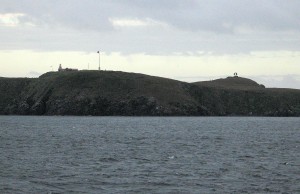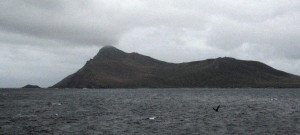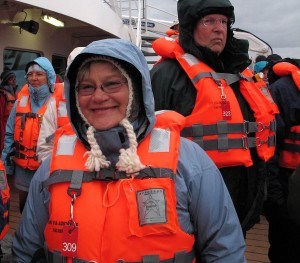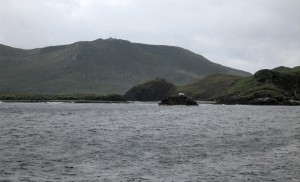There are few places on earth that evoke as much romanticism, dread and stark terror as Cape Horn. It is a lonely place, the most southern point on earth that is not part of Antarctica.
In June 1615, two ships sailed from the Netherlands: Endracht, 360 tons and Höorn, 110 tons, named for the small port of Höorn.
The Höorn was wrecked off the east coast of what is now Argentina and its crew taken aboard the Endracht. On 29 January 1616, they rounded the southern most point and named it Cape Höorn after the lost vessel. The name was Anglicized to Cape Horn as in the horn of a bull. It was also Spanishized as “Cabo de Hornos”, literally the “cape of ovens”, the name chosen for the sound not the meaning of the word.
There is an estimate that more than 800 ships have been lost in the stormy waters of Cape Horn taking with them at least 10,000 men. A large steel monument has been erected in memory of those lost attempting to round the horn.
Traditionally, “rounding the horn” is understood to mean going from 50º South along one coast to 50º South along the other coast. The fastest rounding by sail was done in 1938 by the four-masted barque Priwall in 5 days 14 hours. The longest recorded rounding was the Frigate Susanna in 1905. She took 99 days, 80 days in strong storm conditions with around 150 hours in hurricane force winds.
Judy and I, as sailors, have long been fascinated by the mystic of Cape Horn. We were in Bariloche for the wedding celebration, already 42º S. We had plenty of time left in the trip to go south. We booked passage on a cruise ship operated by Cruceros Australis. The route advertised a stop ashore at Cape Horn, weather permitting.
Preparation for this shore excursion was different. We had a special briefing the night before. We would debark from the zodiacs differently and might get wet. We were to keep our life vests on all the while we were ashore. We were to get up early and get dressed in our rain gear and have the life vests on. The captain would make the decision to go ashore at the last minute. Zodiacs could only be launched if winds were under 30 kts. The waves at the landing site must be at an acceptable level. We were to gather in the top deck lounge ready to go and await the decision.
We got there, It was OK to launch the zodiacs. They zoomed to the landing site to check conditions. Wave action was OK. We could board the zodiacs. We did and stepped carefully onto the shore platform between waves. We climbed the steep stairway and we were ashore on Isla Hornos. We could go to the monuments and to the lighthouse keepers house and up into the light house. All the while we listened for the ships whistle which would signal an immediate return to the ship. It never came so we could spend more time roaming around the island. The wind blew very hard all the while we were ashore but the landing site was somewhat sheltered.
Walking on Isla Hornos – Cape Horn – was the most thrilling event of the cruise and much of the reason we signed onto the cruise.
We saw all we were going to see ashore and we made our way back to the zodiacs. We were ferried back and when we were under way, the captain announced that the ship would continue south off the southern tip of the island – Cape Horn itself. Then the ship turned north and headed toward Tierra del Fuego and eventually Ushuaia.







Larry and Judy, what an amazing adventure, to have actually seen and set foot on Cape Horn! You lead such an exciting life! Thanks for sharing! ~~ Marge